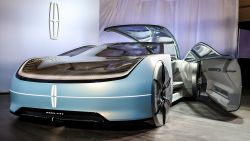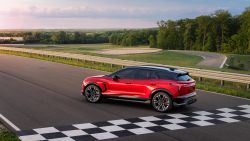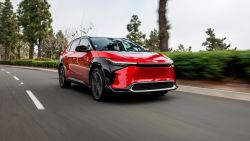It’s happened again: A Tesla with its Autopilot feature engaged was involved in a fatal crash.
The crash, which happened March 1 in Florida, left the 50-year-old Tesla driver dead. Authorities revealed new details about the incident on Thursday. The driver turned on Autopilot about 10 seconds before the Model 3 sedan collided with a semi truck, according to the National Transportation Safety Board. The Tesla driver’s hands were not detected on the steering wheel for less than eight seconds prior. The truck driver was uninjured.
The NTSB’s report did not indicate the Tesla driver was at fault and said the investigation is ongoing. But the news raises more questions about Tesla’s marketing of Autopilot, the company’s semi-autonomous driving software.
Tesla CEO Elon Musk has long promised that full self-driving capability is on the way — but it’s not here yet. And critics argue that slapping the “Autopilot” name onto a driver-assistance feature can lull people into a false sense of security, making them less likely to stay fully alert and therefore be more vulnerable to a crash.
Tesla has consistently defended its Autopilot feature.
“Tesla drivers have logged more than one billion miles with Autopilot engaged, and our data shows that, when used properly by an attentive driver who is prepared to take control at all times, drivers supported by Autopilot are safer than those operating without assistance,” the company said in a Thursday statement.
A separate vehicle safety report from Tesla shows that in the first quarter of this year there was one accident for every 2.87 million miles driven in which drivers had Autopilot engaged. For those driving a Tesla without Autopilot, there was one accident for every 1.76 million miles driven.
Several crashes have occurred in the past while Tesla’s Autopilot function was engaged, including a few fatal incidents.
For example, one crash — also in Florida, and which involved a Tesla and a tractor-trailer — killed a Tesla driver in 2016. His Model S crashed while Autopilot was active, and authorities said the driver had not tried to control the car in two minutes.
Earlier this month, the family of an Apple engineer said it is suing the automaker. They blamed the Autopilot feature on his Tesla for his death. Tesla had said it determined the driver’s hands were not detected on the wheel for six seconds prior to the collision. The company declined to comment on the lawsuit.
Tesla’s Autopilot function has evolved in recent months and years, giving cars more advanced self-driving capabilities — but it’s still intended for use only with a fully attentive driver. It’s also not designed to work on certain roads, and drivers are expected to keep their hands on the wheel at all times.
But it is possible for a driver to touch the steering wheel without the car detecting it.
The Model 3 owner’s manual tells drivers that the car “detects your hands by recognizing light resistance as the steering wheel turns, or from you manually turning the steering wheel very lightly (without enough force to retake control). Engaging a turn signal or using any steering wheel button or scroll wheel also qualifies for your hands being detected.”
Correction: A previous version of this story said the driver's hands were not on the wheel. In fact, it's possible that the driver's hands were on the wheel but that the system did not detect them. Additionally, a previous version of this story incorrectly identified the model of Tesla involved in the 2016 crash.
CNN Business’ Peter Valdes-Dapena contributed to this report.























